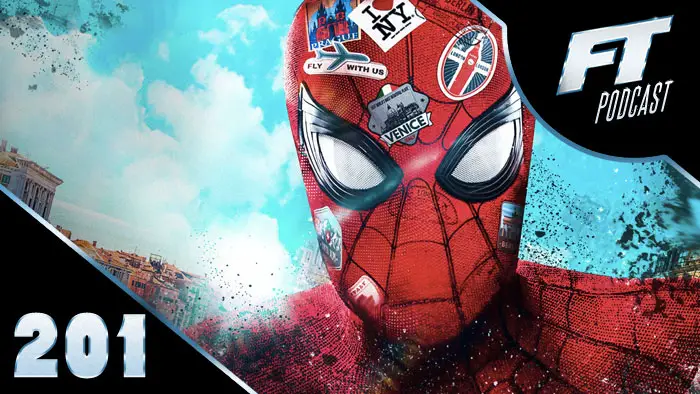
2008 FANTASIA FILM FESTIVAL FEATURE! To say that “La Terza Madre,” the final installment in Dario Argento’s “Three Mothers” trilogy, is long in coming is an understatement. “Suspiria” and “Inferno,” the first and second parts respectively, were made in 1977 and 1980. That’s a 27 year gap between releases (“Terza” was first released at the Toronto Film Festival in September 2007) and an 18 year gap since I’ve personally seen a Mothers’ film for the first time.
To get in the mood, I re-watched “Inferno” just before this film. It’s not half as good as “Suspiria,” which is Argento’s best film and one of the best horror movies of all time, but it still is a brilliantly flawed piece of work. Not brilliant in spite of its flaws, but because of them. It’s loud and obnoxious and stylish and bold. Intellectually, you look it and go “What the f…” because it’s all over the goddamn place. The screenplay looks like it was written by someone who’s never seen a film before, the music cuts in and cuts out at full volume whenever it feels like it, all the voices are looped badly, and the story is nigh incomprehensible.
But so what? It’s got passion and soul. It’s the very essence of what it is to be Italian. Nobody buys a Ferrari because it’s practical. Nobody wears Gucci shoes because they’re comfortable. Nobody goes to Venice for the modern accommodations. The nature of Italy’s spirit is to put beauty above such petty, practical, everyday things. Argento’s films were no different. They were almost angrily inaccessible and obsessed with style over substance. But you know what? It worked. It wasn’t just great, it was monumentale! It was magnifico! Get my drift?
As for “Suspiria,” it’s a much better film but shares each and every one of these flaws. In fact, the only reason it’s significantly better is that it doesn’t waste time with great big gobs of clumsy exposition like “Inferno” does. It drops a few hints here and there, but for the most part wisely keeps you in the dark.
So finally, after all these years, we have the third and final film in the series: “La Terza Madre” (AKA “The Mother of Tears” for us English folk.)
Well, to its credit, “Terza Madre” is as well-written as “Suspiria” and “Inferno,” and it’s as well-acted. Also, believe it or not, it’s much gorier than both those films put together. I’m not kidding, you actually see someone get strangled with their own intestines. In fact, I have to say that this film is quite competent and well-done. It’s better in many technical ways than the first two. There’s none of “Suspiria’s” or “Inferno’s” flaws. No bad dubbing, no chaotic editing, no soundtrack blaring out of nowhere for no reason.
And this is where we run into the problems so hard that our fragile little head explodes into a billion gazillion bloody pieces. Argento has traded passion for competence, style for substance. Sure, there are a few moments where Argento of old pops up, especially towards the end, but for the most part the film is too straightforward and generic. It’s trying to explain too much, it’s trying to be too logical and deliberate. There are no bright colors and bizarre set pieces. There’s nothing dreamlike to make us feel like this is an evil fairy tale come to life like the other films. This doesn’t look like part three of the trilogy, so much so that when at one point Argento uses the same narrator’s voice for the book about the Three Mothers that was used in “Inferno,” it’s jarring.
Not to mention that the film’s few attempts at stylistic flourishes look so friggin’ goofy. The risk you take by spending your whole life trying to be extremely a la mode is that you’ll look ridiculous in later life because age tends to destroy any and all fashion sense, and you turn into a soulless exaggerated parody of yourself like all those insane fashion designers that think peacock feathers and bowler hats are the next big thing in women’s wear.
If you look at it intellectually, there’s really not that much wrong. The story, for example, is fine. An ancient sealed urn is discovered in an old tomb. When it’s opened, an evil awakens and heralds a new age of black magic and the second fall of Rome; only the daughter of a white witch (Asia Argento) can stop the last surviving of the three Mothers, the Mother of Tears.
Right there we’ve got more plot and story than “Suspiria” and “Inferno “combined, and it wouldn’t be a big deal except that the part of your brain that feels rather than thinks is just screaming at you that it’s all wrong. Story didn’t matter before and it doesn’t matter now. Argento films used to be like going to the Opera where you can’t understand any of the words sung, but it’s so beautiful that you don’t care.
I also think it’s really telling that while the first film references De Quincey, and the second film references Dante, the third film references, well… nothing. “Mother of Tears” isn’t based on a theme; it’s based on the first two films.
I guess the only way I can end this review is by saying that, if nothing else, this film has given me the ability to close the book on Argento. He was my artistic Papa when I was a kid and stayed that way for a long time. And while I still have deep fondness for him, I can’t pretend to like his new films anymore. A real shame.

